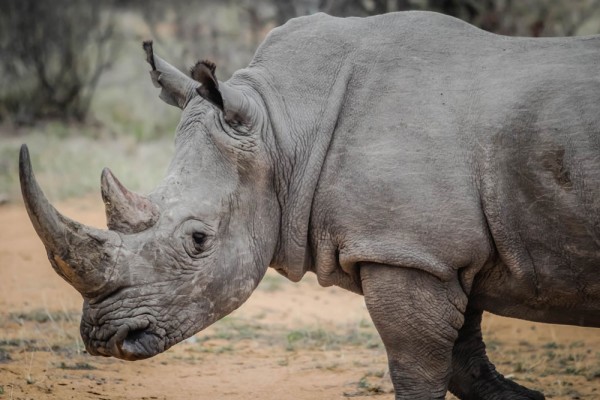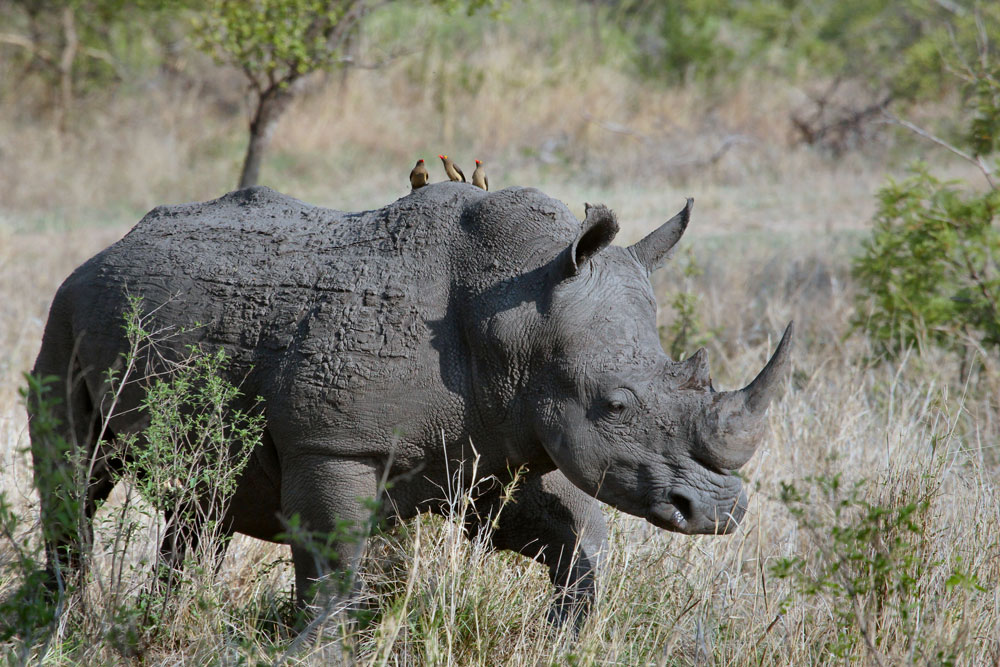 An African rhinoceros is pictured in this handout photo.
An African rhinoceros is pictured in this handout photo.
It is so coveted that it’s worth more than its weight in gold.
Its intended use has long been proven ineffectual, and yet the demand is contributing to the obliteration of a species.
The illegal trade of rhinoceros horn in Africa is fraught with controversy and two University of Windsor business students have become engrossed in the issue.
“It’s just not fair to these animals,” said master of business administration student Fred Wilkins.
“You hear the stories of the rhinos being poached and then to see the photos was too much. I have the knowledge and the skills, so I wanted to help.”
Outstanding Scholar Kara Kristof was tasked by her business ethics professor Kent Walker to untangle the complexity of the rhino horn trade.
“We wanted to look at the situation with rhinoceros horns in South Africa from the stakeholders’ perspective,” the 19-year-old undergrad said.
“Before this case study, I had no clue the complexity of the whole situation.”

Kara Kristof says that demand for rhinoceros horn is created largely by incorrect beliefs about its curative properties.
The black rhinoceros is considered critically endangered with fewer than 5,000 left in the wild. Poachers will cut the horn off the rhino, often killing the animal, and will sell it on the black market for up to $86,000 per kilogram.
Kristof’s study examined the issue from the perspective of the rhinoceros, crime bosses, poachers, legal game farmers, professional hunters, park rangers, and the South African government.
She said if the current levels of poaching are sustained, the rhinoceros will be extinct by 2020.
It was working alongside the park rangers that brought Wilkins face-to-face with the pressure illegal poaching has on the rhino.
After serving for nine months with a specialized unit in the British military, Wilkins injured his shoulder while working out and decided it was time for a change.
“The first time I went to the bush was in 2010 and I saw loads of game reserves,” Wilkins said.
“A couple of years later I went back with my friend and decided that we need to do something to help the rhinos.”
It was during that trip that the two were encouraged to use their military experience to train rangers on how to better protect the rhinos.
From October through December in 2015, Wilkins and his friend trained the rangers on weapon care, weapon handling, drills and manoeuvres.
“These poachers are carrying high-power weapons and are potentially getting a horn worth $500,000,” Wilkins said.
“After training the rangers on what kind of tactics and manoeuvres to use, from day one to the end was really a night and day difference.”

Kristof said the demand for the rhinoceros horn is largely created by incorrect beliefs about its curative properties.
“In Vietnam, the rhino horn is falsely believed to have these medicinal uses,” Kristof said, explaining it’s mistakenly thought to be an aphrodisiac and can cure fever, hangovers and cancer.
“They have no clue that scientific tests have been done and show that it doesn’t do anything. It basically has the same medicinal benefits as biting your fingernails.”
Because the horns are made out of keratin, Kristof said a proposed solution to help stem poaching is to cut the horns down.
“If you cut the horn down to a certain point it will still grow back,” Kristof explained.
“The downside to this is that there are these stockpiles of horns which creates the possibility of crime.”
Kristof’s case study was presented during a roundtable discussion at the 2017 Administrative Sciences Association of Canada conference on May 29.
Wilkins said he hopes to return to South Africa following his master’s degree to assist in a research project on the use of deadly force by field rangers in high-threat night operations.
